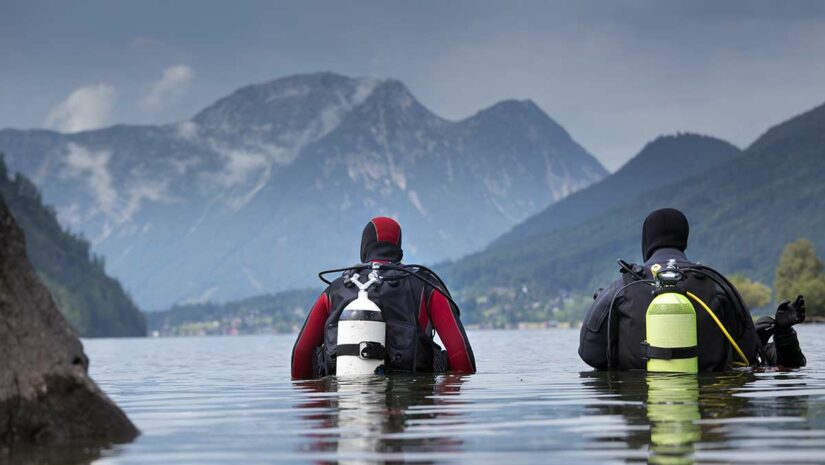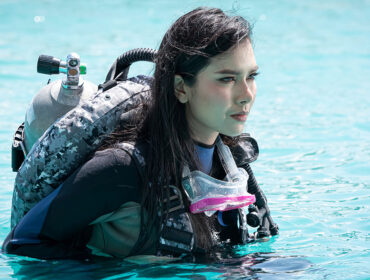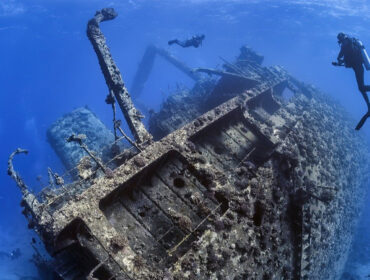Ever thought about diving in a lake surrounded by mountains? That would be altitude diving. In this article, we’re going to dive deep (pun intended) into what makes altitude diving different from a regular dive in the ocean. We’ll also tell you about the challenges of altitude diving, the unique flora and fauna, and we will point you towards several unique altitude dive sites. So, if you’ve ever been curious about diving somewhere other than the sea, or just want to know more about this unique type of diving, then this article is for you.
What is Altitude Diving?
Altitude diving is very similar to regular scuba diving, except that instead of diving in the ocean or sea, it takes place in freshwater lakes or ponds located at higher altitudes, such as mountains. The catch is that with altitude diving, you rise above sea level. When you rise above sea level, the air pressure around you lowers.
Divers must be aware of this change in air pressure because it influences how our bodies interact with gases, particularly nitrogen, from the air we breathe underwater. Because our bodies manage nitrogen differently at high altitudes than at sea level, divers need to adapt their diving procedures.
In short, altitude diving is more than simply experiencing the underwater world of high-altitude lakes. It is also about knowing and adjusting to the pressure shifts that happen to ensure you have a safe dive.
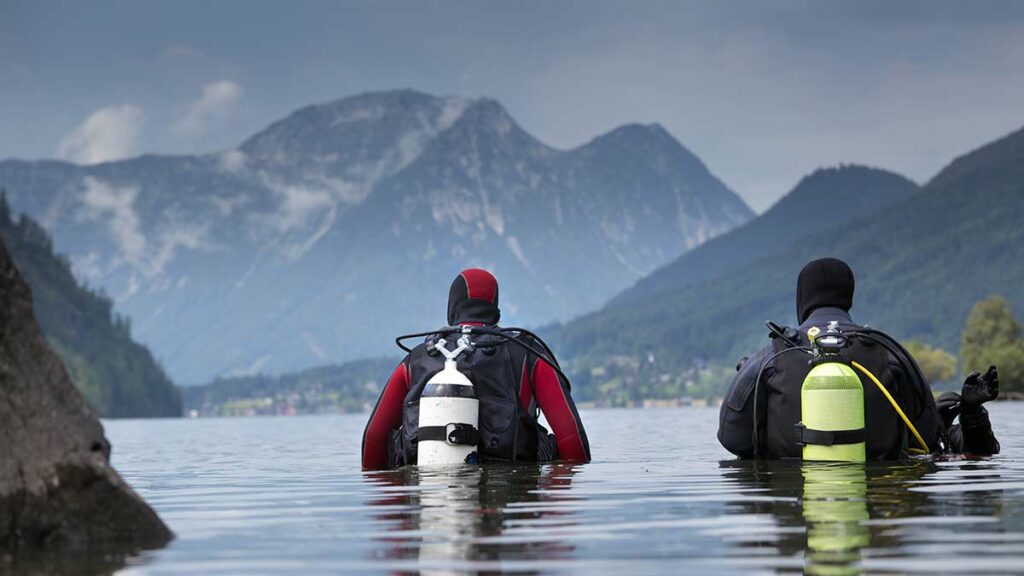
Tips for Preparing for Altitude Diving
If you want to get involved in high-altitude diving, here are a few tips to ensure a safe and enjoyable dive:
Understand the Pressure Difference
At greater altitudes, air pressure is lower. Remember that lower pressure means your body reacts differently to gases such as nitrogen. This influences your decompression stops and the length of time you can stay underwater. It is essential to change your dive tables or use a dive computer that can be configured to diving at altitude. There are also slates on the market that show the pressure difference for diving at altitude.
Prepare for Cold Water
Mountain lakes and ponds are significantly cooler than marine or tropical freshwater areas. You should think about thermal protection. A thicker wetsuit, or perhaps a drysuit, may be required to keep you warm during your dive. Furthermore, cold water might impair the performance and flexibility of your equipment as well as your own physical response times. Make sure your regulators are suitable for cold water diving, like the Apeks MTX-R cold water regulator.
BCD Adjustments & Weighting
Buoyancy in fresh water differs from that in saltwater. You may notice yourself sinking quicker than usual, indicating that your weight system needs to be adjusted. Because of the pressure difference, this adjustment is considerably more important when diving at altitude. Combine this with the possibility of cold water, which may necessitate the use of bulkier suits, and you’ve got several factors affecting your buoyancy. Make sure you perform a buoyancy check.
Recognize the Symptoms of Altitude Sickness
Divers, like climbers, can develop mountain sickness. Headaches, nausea, dizziness, and exhaustion are some of the symptoms. If you or any of your diving friends encounter any of these symptoms, it is critical that you address them seriously. Slowly ascend from your dive and seek medical assistance if symptoms persist.
Stay Hydrated and Acclimatize
Before any dive, hydration is essential. But when altitude diving, drinking enough water becomes even more crucial to help combat altitude sickness. Also, if you’ve just arrived at a high-altitude location, consider giving your body a day or two to acclimatize to the new height before diving. This can reduce the risk of altitude sickness.
Safety Protocols Should be Prioritized
First and foremost, safety! Make sure you and your dive buddy understand all safety signals and procedures. Because of the conditions of altitude diving, it’s very important to keep in contact and check your air and no-decompression limits on a frequent basis.
Emergency Procedures
Just like any dive, there’s a potential for emergencies. With altitude diving, these might be a bit different due to the reduced pressure. Make sure you know the nearest decompression chamber‘s location, have emergency oxygen available, and ensure that you and your dive buddy are familiar with first aid procedures.
Plan Your Dive and Dive Your Plan
It’s an old saying in the diving community but especially relevant for altitude diving. Given the unique challenges presented by altitude, it’s important to plan your dive carefully. Decide on depths, times, and safety stops with your dive buddy. And once you’ve got a plan? Stick to it.
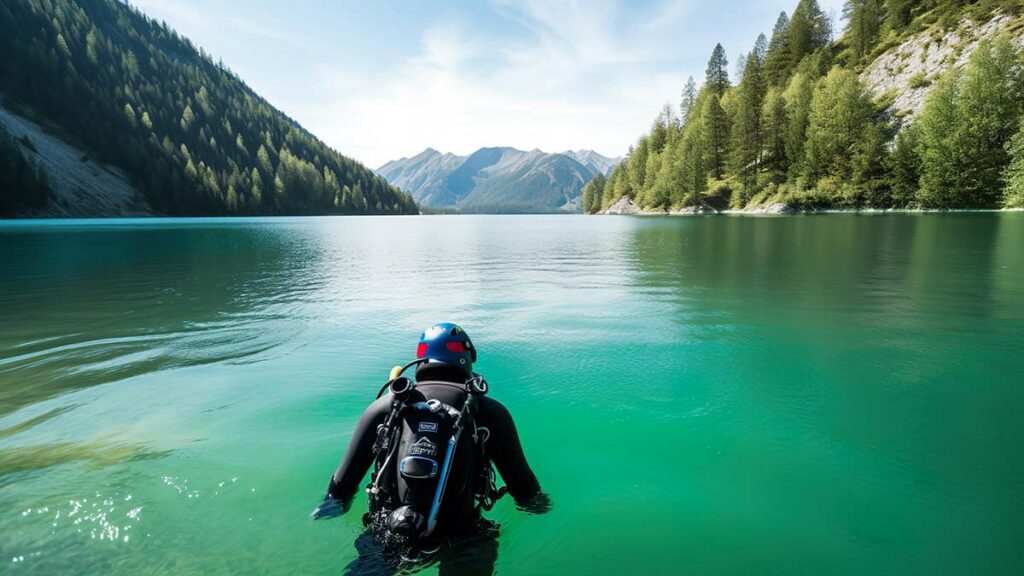
Best Dive Destinations for Altitude Diving
Are you curious about where in the world you can make an altitude dive? Here are some of the best altitude diving locations:
Lake Titicaca, Bolivia/Peru – Altitude: 12,507 feet (3,812 meters)
Lake Titicaca, known as the “highest navigable lake” in the world, crosses Bolivia and Peru and provides divers with a rare chance of seeing ancient Incan ruins and submerged terraces. The stunning blue waters, along with the rich cultural history, make it a popular destination for altitude divers.
Lake Tahoe, California/Nevada, USA – Altitude: 6,225 feet (1,897 meters)
This gorgeous freshwater lake in the Sierra Nevada foothills has very clear water with a visibility that can reach 70 feet (21 meters) at times. Lake Tahoe has a range of dive sites appropriate for both beginners and advanced divers, ranging from amazing rock structures to historic wrecks.
Lake Geneva, Swiss Alps, Switzerland – Altitude: 1,220 feet (372 meters)
Lake Geneva, also known as Lac Léman, is one of Europe’s largest lakes, located in the heart of the Alps. Its crystal blue waters provide dives with breathtaking views of snow-capped peaks, making it the perfect Alpine diving experience.
Lake Atitlán, Guatemala – Altitude: 5,125 feet (1,562 meters)
This lake, surrounded by volcanoes and lush greenery, is a geological wonder that resulted from an enormous volcanic explosion 84,000 years ago. The deep blue waters hide forests and volcanic rocks, resulting in a one-of-a-kind underwater landscape.
Lake Päijänne, Finland – Altitude: 341 feet (104 meters)
While not as elevated as other spots on this list, Lake Päijänne is Europe’s second-largest lake and offers icy cold dives through its clear Nordic waters. Divers can explore underwater caves, rock formations, and even encounter some freshwater marine life.
Lake Baikal, Russia – Altitude: 1,532 feet (467 meters)
As the world’s deepest and oldest freshwater lake, Baikal offers mysteries spanning eons. The sheer depth and age of the lake mean unique flora and fauna, including the Baikal seal. Ice diving here during winter months is a surreal experience, with crystal clear visibility beneath the frozen surface.
Quarry Lakes, Colorado, USA – Altitude: 8,000 feet (2,438 meters)
Quarry lakes produced by earlier mining operations can be found in Colorado’s Rocky Mountains. These remote dive sites provide an unforgettable dive with crystal-clear waters and varied landscape. The combination of the altitude and the mountainous scenery makes for an unforgettable dive.
High Altitude Dive Pools, Switzerland – Altitude: Some over 10,000 feet (3,048 meters)
Some Swiss resorts provide high-altitude dive pools for individuals who enjoy combining luxury and adventure. While they lack natural scenery, they are ideal for training and acclimating to altitude diving conditions.
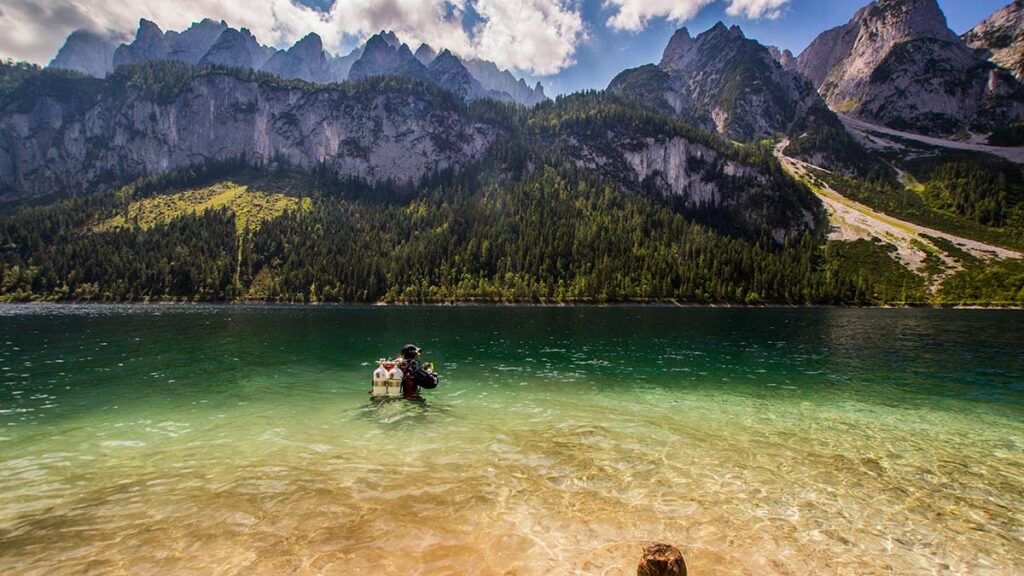
Wildlife & Ecosystems at Altitude Diving
Diving at high altitudes is a dive into an ecosystem that is very different from diving in the ocean. Elevated freshwater ecosystems, shaped by totally different geological and climatic processes, contain a wide diversity of creatures that have adapted to their surroundings.
Freshwater Marine Animals
The biodiversity seen during an altitude dive can be both fascinating and unusual. At first look, altitude lakes may appear less vibrant than the colorful coral reefs of the oceans. A closer examination, however, reveals a plethora of freshwater creatures that have developed over centuries. Divers at Russia’s Lake Baikal, the world’s deepest and oldest lake, can see the world’s only freshwater seal, the Baikal seal, as well as unusual amphipod crustaceans. Similarly, enormous frogs live at Lake Titicaca, which is located between Bolivia and Peru. These frogs have adapted to the thin, oxygen-depleted environment by developing extra skin folds that allow breathing.
Flora & Vegetation
In addition, the vegetation in these lakes is different from that of the ocean. The bottom of these lakes are frequently covered with freshwater aquatic plants, which play an important part in the ecosystem’s survival by creating oxygen and providing shelter to smaller aquatic species. Beds of freshwater grasses, and strange blooms of algae can be found as well. These plants, which frequently create thick underwater forests, provide a safe habitat for tiny organisms ranging from nymphs to larvae, which in turn support larger aquatic predators.
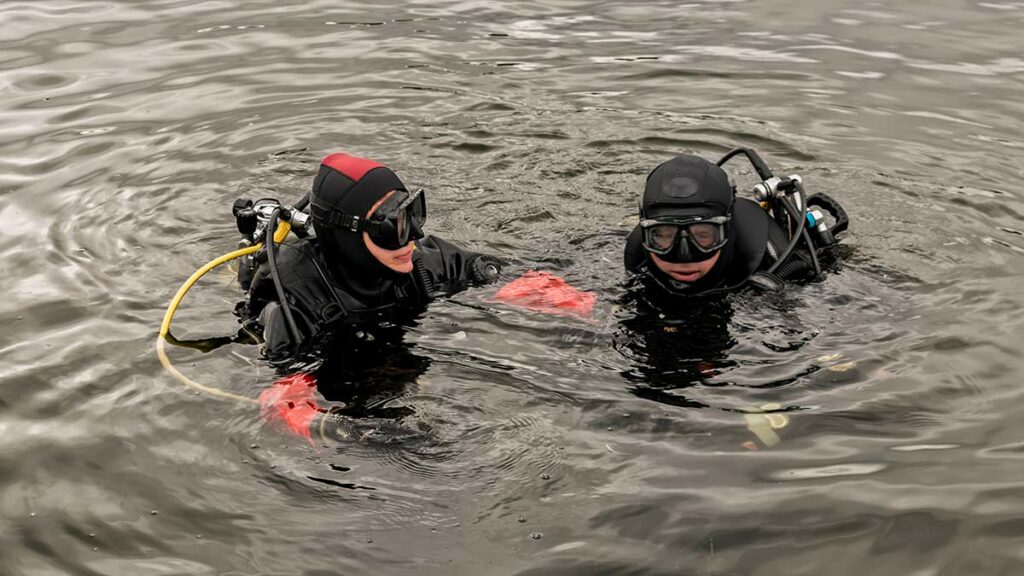
Altitude Diving: Frequently Asked Questions
Special safety precautions and up-to-date dive tables or dive computers that account for decreased air pressure are required for altitude diving. Getting used to the altitude before diving, modifying no-decompression limits, and increasing surface intervals between dives are all important guidelines to follow.
Altitude diving is often used to describe diving in lakes and rivers at elevations above 1,000 feet (300 meters). While there is no set “depth” that defines altitude diving, the elevation of the dive location above sea level defines the dive as an “altitude dive.”
Yes. Given the reduced atmospheric pressure, divers should ascend more slowly than they would at sea level to allow safe off-gassing of nitrogen. It’s best to follow guidelines provided in altitude-specific dive tables or dive computers.
Yes, several dive training organizations, like PADI and SSI, provide dedicated altitude diver courses that include the special considerations and safety measures that come with altitude diving.
Diving and flying on the same day, especially at high altitudes, increases the risk of decompression sickness. It’s recommended to wait at least 24 hours between diving and flying.
Conclusion
Altitude diving is like discovering a previously unknown chapter in Earth’s history. Lakes like Titicaca, Tahoe and Atitlán tell stories of the past, unusual aquatic life, and beautiful underwater scenery. But with any great adventure, there’s a catch: when you’re up high, the laws of the game alter. Understanding and following these rules is essential. Altitude diving can really provide a fascinating view into a world that only a few get to see. If you get the chance to try it, you should really consider doing so!

